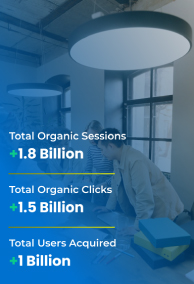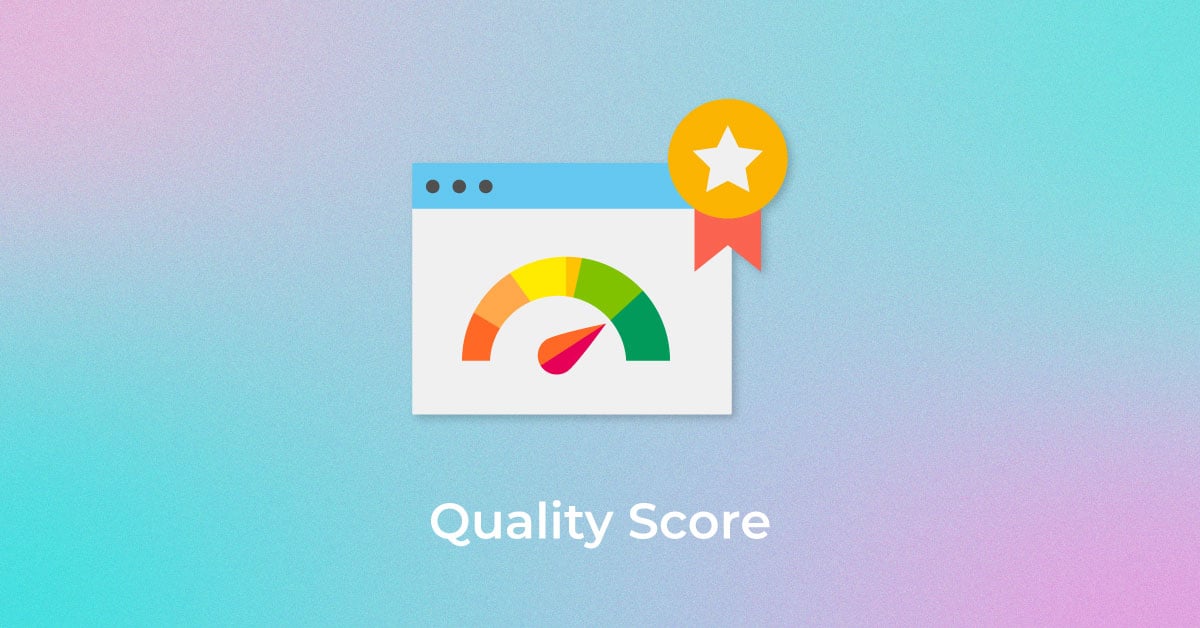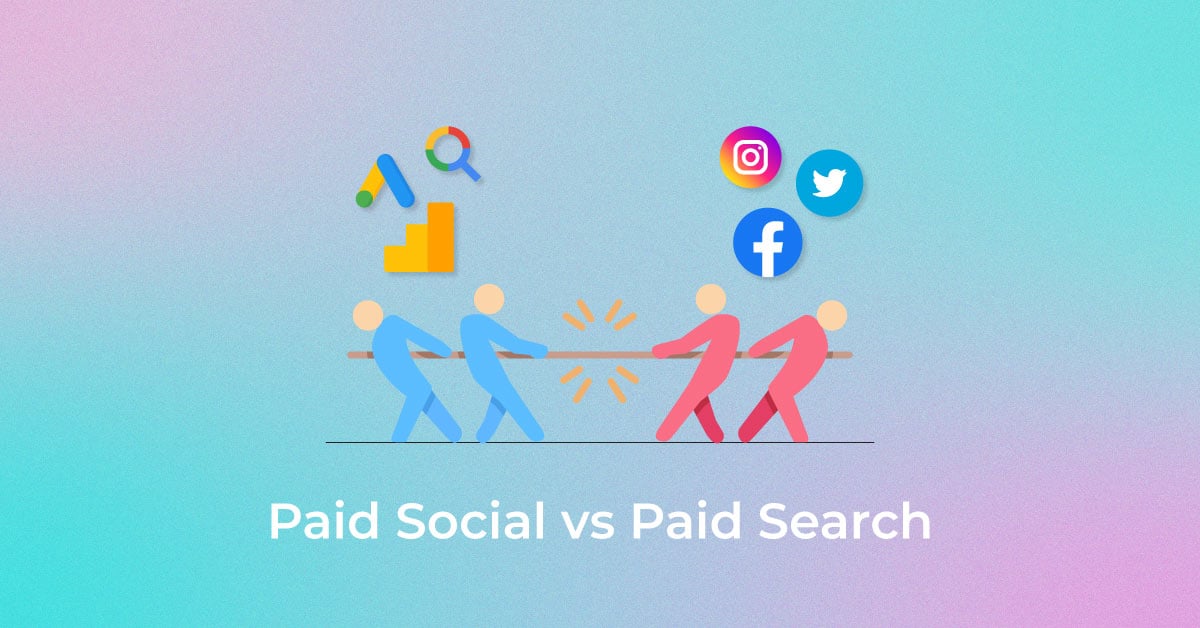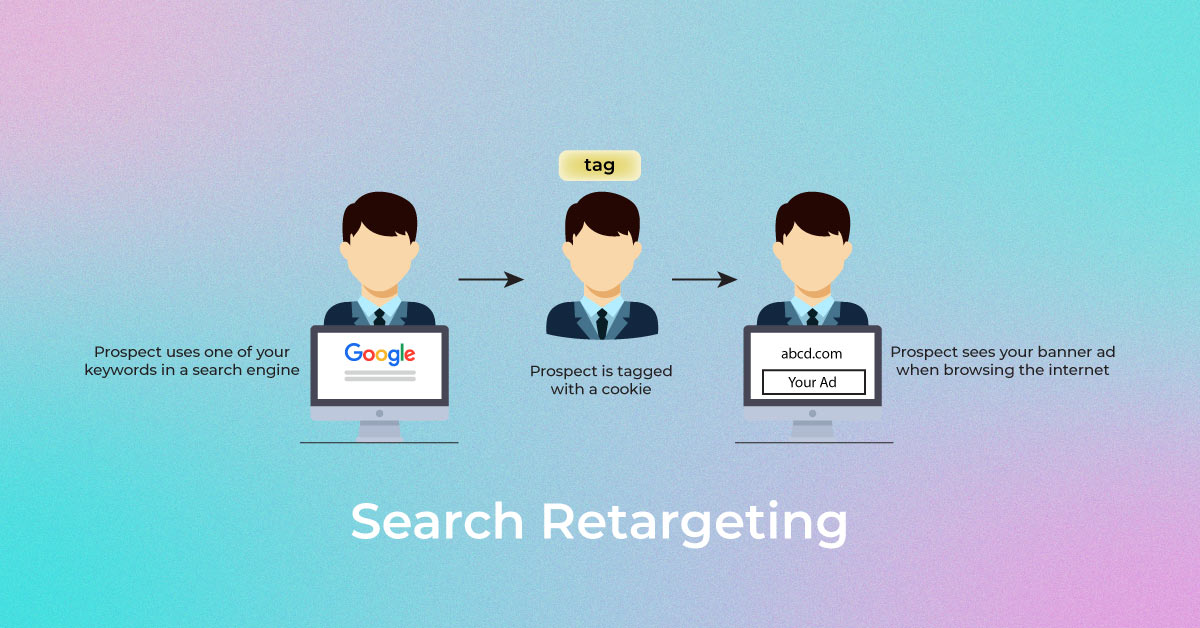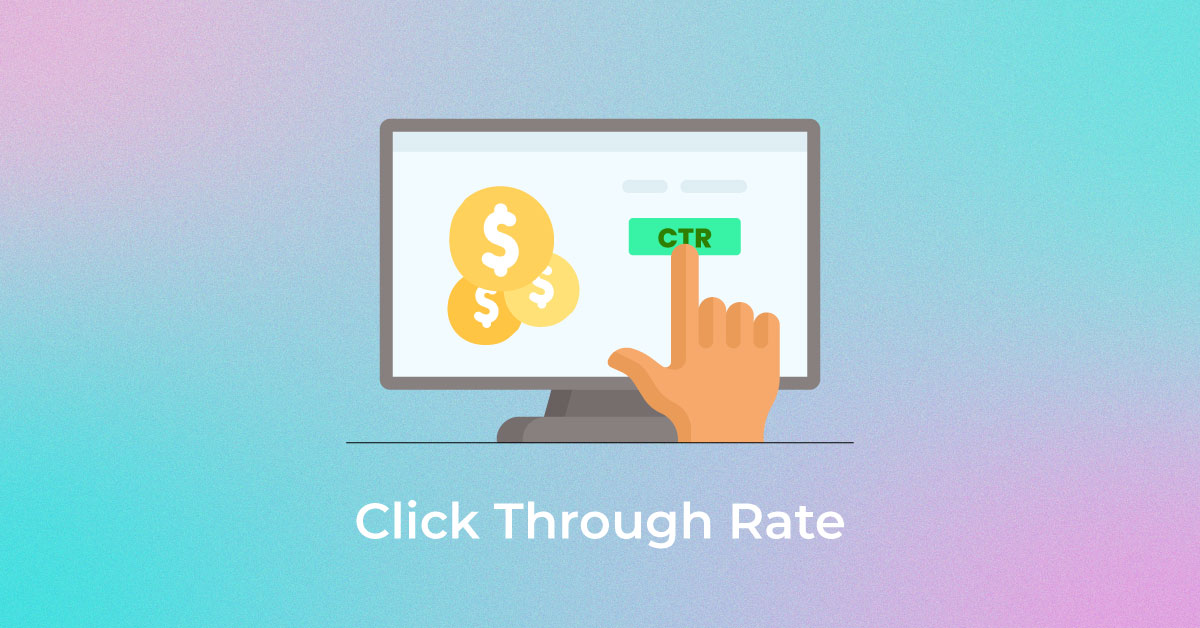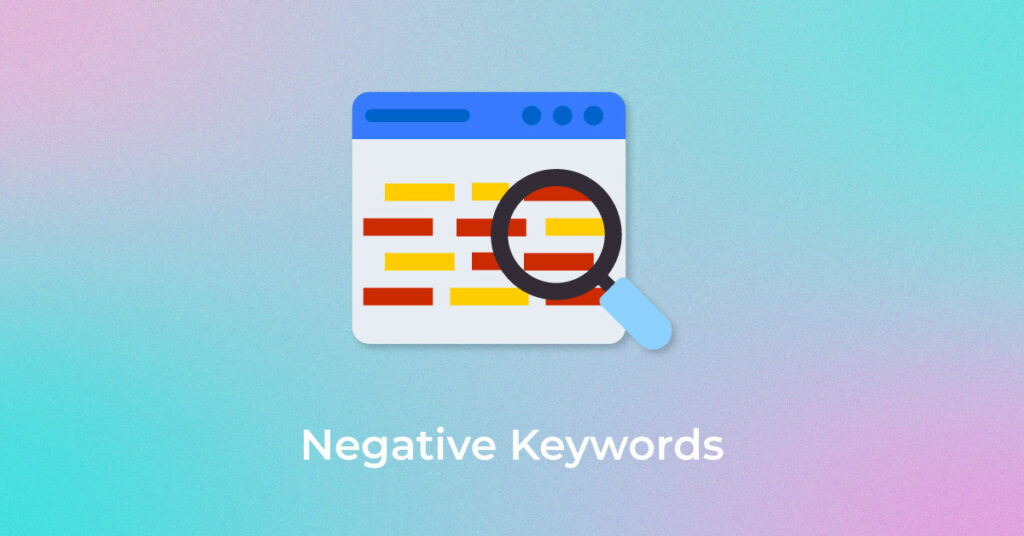
Witness an Increase in your ROI
Unlock higher rankings, quality traffic, and amplified conversions through tailored award-winning SEO strategies.
Paid advertising and digital marketing campaigns can bring brilliant solutions and results for businesses in generating revenue, increasing brand awareness, and much more. To achieve this kind of success, it is crucial to target specific keywords that are relevant to your campaign and goals.
However, not every keyword is equal. You definitely would not want to use keywords that have nothing to do with your brand or campaign. This brings us to negative keywords. What are negative keywords and how can you utilize them? Let us find out.
What are Negative Keywords?
Negative keywords are a means to prevent your content or ads from showing up to people whose search queries are unrelated to your products or services.
Negative keywords serve two purposes. One, they effectively eliminate keywords from your campaign that would not result in conversions and two, they reach the best audience for your brand.
Simply put, effective campaign management is all about expanding the list of keywords that your brand bids on. While your list expands, you simultaneously refine the keywords on the list and make them very specific so that they boost your ROI. This could mean putting a pause on the use of poorly performing keywords or eliminating them altogether.
To seamlessly increase the click-through rate (CTR) of your ad campaigns, it is crucial to know your target audience and identify the base that has the most potential to convert.
Negative keywords help your brand reach the audience with the most potential to convert. These keywords can be of many types, such as phrases, exact terms, or broad terms. To realize the true value of negative keywords in AdWords or Bing, it is imperative to understand how exactly these match types function.
Difference Between Campaign-Level and Adgroup-Level Negatives
There are primarily two types of negative keywords—Campaign-Level and Adgroup Level. These types are different in both relevance and usage.
Campaign-level negative keywords are added to the ad management system at the campaign level. They prevent your ads from showing up in the specified list of keywords. This type is mainly used to exclude search queries that do not fit with your offerings. For instance, if you are running a campaign to sell sports shoes but you do not have any blue shoes, then you would want to add “blue sports shoes” to the negative keyword list.
As for Adgroup-level negative keywords, they are used to protect specific ad groups in a campaign. This helps campaign managers control the ad groups of the account that target specific keywords. For instance, this type allows you to use “blue sports shoes” only in an ad group dedicated to a specific product. The remaining broad match type ad groups with generic terms “sports + shoes” can have “blue” or “blue sports shoes” as the negative keywords.
Negative keyword match types
-
Broad match
Broad match type of negative keywords prevents your ads from showing up in searches which include every single word of your keyword phrase, in any order.
For instance, if your broad match negative keyword is “sports shoes”, then you might appear in searches for terms like “sports gear” or “running shoes”. But your ads will not show up for searches that have both words in them such as “sports running shoes” or “sports gear with shoes”.
-
Phrase match
As the name suggests, phrase match type negative keywords prevent your ad from showing up on very specific search queries. Brands use phrase match type negative keywords to prevent their ads showing up on search queries with specific phrases or additional words with the phrase.
For instance, if your phrase match type negative keyword is “mobile repair shop”, then your ad will not be shown for any searches that have phrases like “mobile repair shop near me” or “Samsung mobile repair shops in Mumbai”. However, your ads may show up for search queries like “mobile services near me” or “mobile servicing shops in Mumbai”.
-
Exact match
Exact match type negative keywords are widely considered the most effective type of negative keyword because they prevent your ad from showing up for exact phrases or terms. For instance, if your exact match type negative keyword is “Asian cuisine”, then your ads will be excluded from the result pages of only this query. Any other variation of this query might still display your ads.
Benefits of Adding Negative Keywords
-
Improves conversion rate
You already know that people who search terms or phrases that you use as negative keywords do not convert. Hence, it helps in ensuring that your campaign mostly reaches an audience that has a good potential to convert, thus improving your conversion rates.
-
Cost-effective
For pay-per-click (PPC) ads, you can very conveniently avoid paying money for useless clicks by utilizing negative keywords since your ads are not being displayed under irrelevant search queries. This also helps you avoid bids for keywords against yourself, while staying away from cannibalizing impressions.
-
Generate more relevant ad groups
Improving the relevance of your ads by filtering out irrelevant keywords helps your ad groups. Closely related and targeted ad groups help you craft a targeted and single message for your ads, which can speak for the entire group of the keywords in your ad group.
-
Improves CTR
Your ads not showing up on results that are irrelevant to your offerings means that you are exposing your ad to people who might actually be interested in your brand. This means that you have weeded out the uninterested impressions, and your CTR will be far greater and rewarding.
-
Attract more relevant users
Your ads are reaching users that would be most interested in your offerings. Since you have taken care of the users who might be looking for something else, your ads will attract relevant users. This will further help you to expand your loyal user base by offering them exactly what they need.
How to Identify Negative Keywords
While you analyze the collection of keywords you want to target for your campaign, it is also important to compare and prioritize them based on their data. While doing this, you can simultaneously start building your negative keywords list. But, how do you identify negative keywords? There are two effective ways:
-
Manual
While you perform the standard practice of keyword research, it is a good idea to be on the lookout for any terms you might want to avoid in the results. If you see any search results or terms that are not related to your goals, you can add them to your negative keywords list.
-
Search Terms Report by Google Ads
If you are using Google AdWords, then the search term reports on the tool can help you identify phrases and terms that do not match with the search intent. You can generate the report in your Google Ads account easily by just selecting a date range. Once you have this data, download the report and analyze the performance metrics of all keywords in your ad groups like attribution or conversion rate. This will help you identify even more negative keywords.
How to Add Negative Keywords
Now that we have gone over how to find negative keywords, let us dive into how you can add them to your Google Ads account.
Open your Google Ads UI, and select the “Keywords” tab. Here, you can see the options of account, ad groups, and campaign-level negative keywords. The UI displays all the keywords that you are bidding on by default. However, it does not show you the queries that might have triggered them.
To access this information, click on the “Search Terms” box. On clicking, you will be able to see the following columns:
- Match Type – This parameter tells you how much a search query or term matches with any of your keywords.
- Search Term – This is the search term or phrase that the user entered which triggered any of the keywords that you are bidding on.
- Added/Excluded – This refers to any action you take or have taken with a search term or query (added the term or query as a negative keyword or added it to your Google Ads account)
Once you are able see the keywords, you can check the box on the left side of the results. For instance, if the search query is “sports shoes”, then you can select the checkbox and it will be highlighted blue. Select the option “Add as negative keyword” and then a prompt asking you to choose the negative keyword match type is displayed. Once you have chosen the match type, click “Save”. Your negative keyword is now live.
The other option is to assign the negative keyword/s you have chosen to a negative keyword list. You can apply this list to more than one area or ad group in your Google Ads account. Let us take a look at how to do this.
Build a list of negative keywords
The first step is to ask your Google representatives for all the negative keywords lists that they utilize for similar accounts. You can vet these lists to ensure that the keywords in them are not taking any important terms from your campaigns. It is a simple way to start things off, as it significantly reduces the manual labour involved in building a list from scratch.
The next step is to properly explore Google Keywords Planner with your targeted keywords. This will help you identify all related terms and phrases that can help you in examining which terms or phrases to add to the list.
To add even more negative keywords in the list, you can also check out the Search Query report. This will help you further identify which searches are actually triggering your ads. Check the results and add any search terms or phrases that are irrelevant to your ad in the list.
Conclusion
When you are bidding on the top ranking or the best keywords in your industry for your ads, it is only going to take you so far. Having a comprehensive and expanding list of negative keywords will significantly improve the result of your campaigns.
Google has refined its algorithms to such an extent that it can sift through millions of ads and show the right ones to the users based on their searches. But you have to ensure that you are providing enough data to the algorithms to help them detect the right things.
This is where having a PPC company like Infidigit can help you significantly. Having extensive expertise in the domain, Infidigit can help you collect the most useful negative keywords to help you generate the best results from your campaigns.
Popular Searches
List of Search Engines | Top Google Searches | Importance of Digital Marketing | Importance of Website | Youtube SEO Tools | Types of SEO |Website Structure | Benefits of SEO | Cloaking |Google Sandbox | SEO Friendly Website | Blog Commenting for SEO | Server Side Rendering Vs. Client Side Rendering | Youtube Trends | Types of Sitemaps | Social Bookmarking |Off Page SEO Checklist | HTTP Status Codes | Vanity URL | SEO Vs. PPC | Best SEO Blogs | Benefits of LinkedIn Ads | Keyword Density | How to Use Keywords in Blog Posts | Website Migration | Digital Marketing Types | Search Engine Optimization | Canonical Tags | On Page SEO | What is Off Page SEO | Link Building for SEO | Image Optimization | SEO Company in Boston | Dallas SEO | SEO Company Houston
How useful was this post?
0 / 5. 0

